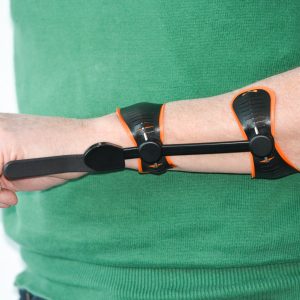Ehlers-Danlos Syndrome (EDS) is a group of genetic connective tissue disorders that affect the body’s ability to produce collagen, leading to joint hypermobility, skin fragility, and other symptoms. One common yet often overlooked issue faced by individuals with EDS is wrist weakness. In this blog post, we’ll delve into the causes, symptoms, and management strategies for wrist weakness in patients with EDS.
Causes of Wrist Weakness in EDS
The wrist instability can stem from various factors, including:
- Joint Hypermobility: Individuals with EDS often experience joint hypermobility, which can lead to instability and weakness in the wrists.
- Ligament and Tendon Dysfunction: Collagen abnormalities in EDS can affect the strength and integrity of ligaments and tendons around the wrist joint, contributing to weakness.
- Nerve Compression: Compression of nerves in the wrist, such as the median nerve in carpal tunnel syndrome, can exacerbate weakness and numbness in individuals with EDS.
Symptoms of Wrist Weakness in EDS
The symptoms may vary from person to person but can include:
- Difficulty gripping objects firmly
- Limited range of motion in the wrists
- Pain or discomfort with wrist movement
- Instability or feeling of “giving way” in the wrists
- Numbness or tingling sensations in the hands and fingers
Management Strategies for Wrist Weakness in EDS
Managing this condition requires a comprehensive approach aimed at improving strength, stability, and functionality. Some strategies include:
- Physical Therapy: Working with a skilled physical therapist can help strengthen the muscles surrounding the wrist joint and improve joint stability.
- Orthotic Devices: Custom-made wrist braces or splints can provide external support to the wrist, reducing strain and promoting proper alignment.
- Occupational Therapy: Occupational therapists can teach adaptive techniques for performing daily activities while minimizing stress on the wrists.
- Pain Management: Modalities such as ice packs, heat therapy, and over-the-counter pain medications can help alleviate discomfort associated with wrist instability.
- Lifestyle Modifications: Avoiding activities that exacerbate wrist symptoms and practising proper ergonomics can help prevent further strain on the wrists.
- Surgical Intervention: In severe cases of wrist instability or nerve compression, surgical procedures may be considered to address underlying structural issues.
In conclusion, wrist weakness is a common yet often challenging symptom for individuals with Ehlers-Danlos Syndrome. By understanding the causes, recognizing the symptoms, and implementing appropriate management strategies, individuals with EDS can effectively address joint instability and get the support they need. If you’re looking for more information, there are a lot of resources available online. This includes The Ehlers-Danlos Society and Ehlers-Danlos Support UK. In addition, here at Amber Orthotics, we have years of experience assisting people with various neurological conditions. Do you have a question about how orthotic devices can help you manage your EDS symptoms? Please feel free to contact us!
Disclaimer: The information provided in this blog post is for informational purposes only and should not be considered medical advice. Please consult with a qualified healthcare professional for accurate diagnosis and treatment recommendations.
-
Amber Orthotics
Amber Wrist Brace
€ 380,00 Select options This product has multiple variants. The options may be chosen on the product page




